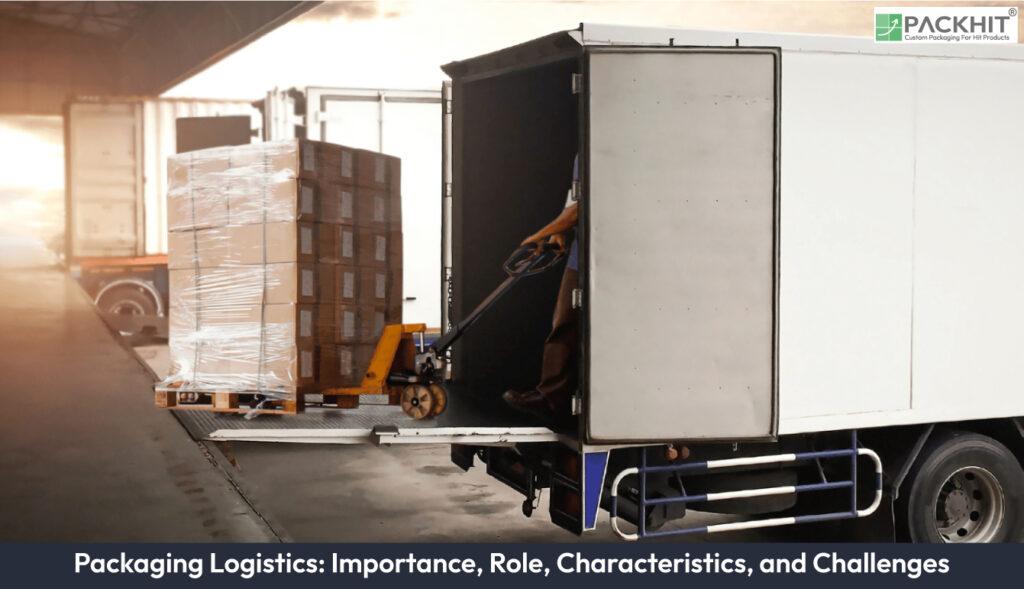Packaging logistics integrates the design, procurement, coordination, and optimization of packaging systems within supply chain operations. It ensures the safe, efficient, and cost-effective movement of goods while addressing storage, transportation, and sustainability requirements. Aligning packaging processes with broader logistics functions enhances operational efficiency, reduces costs, and supports environmental goals. This discipline is critical for manufacturers managing tangible products, as it directly impacts material procurement, space utilization, and product protection during transit.
What is Packaging Logistics?
Packaging logistics refers to the systematic management of packaging activities within the supply chain. It encompasses the organization, control, and optimization of packaging processes to ensure goods are stored, transported, and delivered safely and efficiently. Unlike traditional logistics, which primarily focuses on the movement of goods, packaging logistics emphasizes the role of packaging as a functional component of the supply chain. This includes material selection, design, and integration with storage and transportation systems.
Core Functions of Packaging Logistics
The primary functions of packaging logistics include:
- Material Procurement: Bulk purchasing of packaging materials to reduce costs and ensure availability.
- Coordination: Aligning packaging processes with storage and transportation logistics to improve efficiency.
- Optimization: Enhancing packaging designs and processes to minimize costs and maximize space utilization.
- Sustainability: Incorporating environmentally friendly materials and practices to support long-term goals.
Why is Packaging Logistics Important?
Packaging logistics plays a critical role in ensuring the seamless operation of supply chains. Properly managed packaging logistics improve the speed, safety, and cost-effectiveness of goods movement. It is particularly vital for manufacturers handling high-volume or fragile products, where packaging directly influences storage density, transportation costs, and product integrity. Additionally, it supports sustainability initiatives by reducing material waste and promoting the use of recyclable or biodegradable materials.
Impact on Supply Chain Efficiency
Efficient packaging logistics enhances supply chain performance by optimizing space utilization, reducing material costs, and ensuring timely delivery. For example, lightweight shipper pallets and paper-based packaging solutions can significantly lower transportation expenses while maintaining product safety. Furthermore, structured and routine processes in packaging logistics reduce errors and delays, contributing to overall operational reliability.
How Does Packaging Logistics Support Transportation?
Transportation is a core component of packaging logistics, as it involves the movement of goods from manufacturers to end-users. Packaging logistics ensures that products are securely packed to withstand the rigors of transit, including vibration, compression, and environmental factors. Optimizing packaging dimensions and materials reduces freight costs and maximizes vehicle load capacity.
Space-Saving and Safety Measures
Properly designed packaging systems enable goods to be stored and shipped in a space-saving manner, reducing warehouse and transportation costs. For instance, modular packaging designs allow for efficient stacking and minimize unused space. Additionally, robust packaging materials protect products from damage, ensuring safe delivery and reducing the risk of returns or replacements.
Integration with Logistics Systems
Packaging logistics integrates seamlessly with storage and transportation systems to streamline operations. This includes the use of advanced tracking technologies and automated handling equipment to improve accuracy and efficiency. For example, RFID-enabled packaging can provide real-time data on product location and condition, enhancing supply chain visibility.
What are the Key Attributes of Effective Packaging Logistics?
Effective packaging logistics is characterized by several key attributes, including adaptability, cost-effectiveness, and sustainability. These attributes ensure that packaging solutions meet the diverse needs of manufacturers while supporting broader supply chain objectives.
Adaptability and Customization
High adaptability allows packaging logistics to cater to a wide range of product types and requirements. Custom packaging can accommodate varying dimensions, weights, and fragility levels, ensuring optimal protection and efficiency. This flexibility is particularly important for industries with diverse product portfolios, such as e-commerce and manufacturing.
Cost-Effectiveness
Cost optimization is a fundamental goal of packaging logistics. By procuring materials in bulk and streamlining packaging processes, companies can achieve significant cost savings. For example, using lightweight materials reduces shipping expenses, while efficient designs minimize material waste.
Sustainability
Sustainability is an increasingly important consideration in packaging logistics. Long-term solutions, such as recyclable materials and energy-efficient production methods, support environmental goals while meeting consumer expectations. For instance, paper-based packaging offers a biodegradable alternative to plastic, reducing environmental impact.
Challenges in Packaging Logistics
Despite its benefits, packaging logistics faces several challenges that require continuous optimization. These include balancing cost and quality, addressing sustainability demands, and managing complex supply chain dynamics. Each sub-area of logistics, including packaging, must adapt to evolving market conditions and technological advancements to remain effective.
Balancing Cost and Quality
Achieving cost-effectiveness without compromising quality is a persistent challenge in packaging logistics. While bulk procurement reduces material costs, it may limit flexibility in design and customization. Companies must carefully evaluate trade-offs to ensure optimal outcomes.
Sustainability Pressures
The growing emphasis on sustainability presents both opportunities and challenges. While adopting eco-friendly materials and practices can enhance brand reputation, it often involves higher initial costs and logistical complexities. Companies must invest in research and development to identify cost-effective, sustainable solutions.
Complex Supply Chain Dynamics
The integration of packaging logistics with broader supply chain operations requires effective coordination and communication. Misalignment between packaging, storage, and transportation processes can lead to inefficiencies and increased costs. Advanced planning and real-time data sharing are essential to address these challenges.

